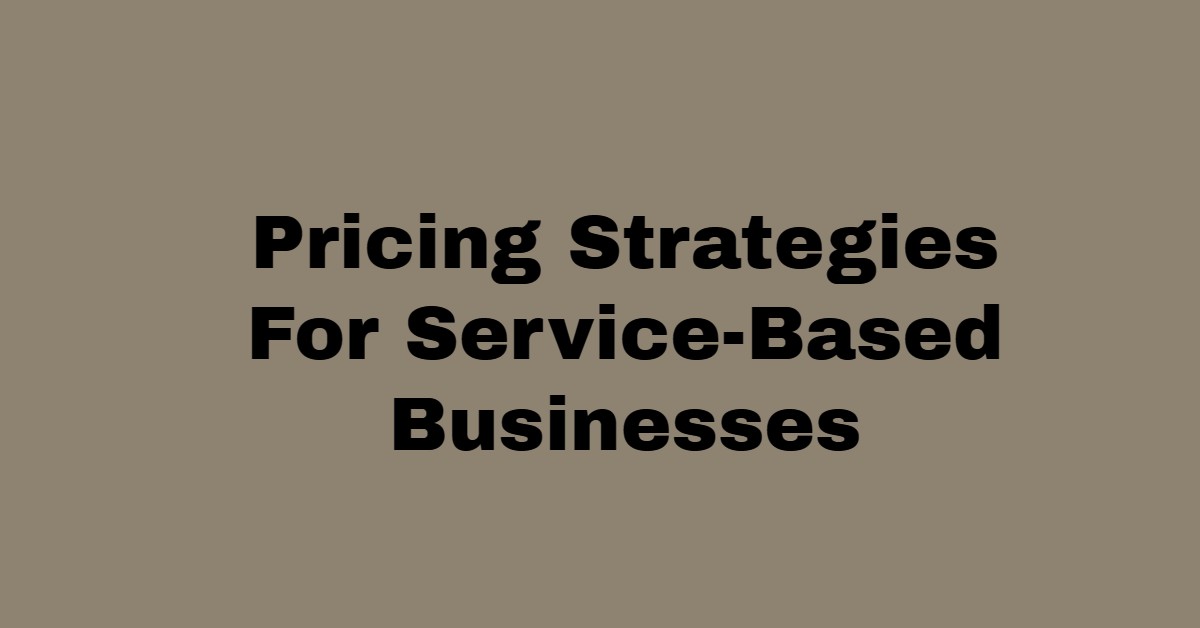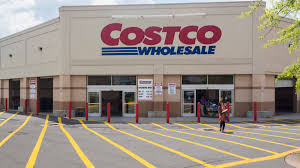14 Pricing Strategies For Service-Based Businesses

14 Pricing Strategies For Service-Based Businesses: A service company’s management is a challenging task. Owners of services businesses are the ones that struggle with pricing models the most. One of the most difficult aspects of a business is developing effective pricing strategies. Although competitive price is important for product pricing, it is not the only one.

In addition to competition-based pricing, additional important pricing models include value-based pricing, economy pricing, premium pricing, penetration pricing, dynamic pricing, bundle pricing, bundle pricing with discounts, psychological pricing, service pricing, hourly pricing, price skimming strategy, and project-based pricing.
It is only normal for service organisations to become perplexed when so many pricing structures are introduced. You’ve come to the correct spot if you’re confused by the many pricing techniques. This post will walk you through the many service pricing techniques, assist you in picking the optimal pricing plan, educate you on the importance of doing so, and provide answers to some of the most often-asked concerns.
Pricing Strategies For Service-Based Businesses – FAQs & Answers
What are the five strategic pricing levels?
The five tiers of strategic pricing are cost-plus pricing, competitive pricing, progressive pricing, penetrating pricing, and value-based pricing.
How can I set a better price for my goods or services?
The first step is to account for all costs, including overhead, variable, direct, fixed, product manufacturing, service, and indirect costs. Next, conduct a competitive market analysis. Finally, determine fair profit margins. Use the steps listed above to determine how much to charge for your goods or services.
What is the significance of service pricing?
Service pricing is the set price that companies impose for a certain service. Pricing your services so that neither they appear unreasonable to potential clients nor they sacrifice your profit margins is the optimal method to run a profitable business.
What pricing strategies are there?
Pricing strategy is the method that companies use to set their prices for their products or services. The pricing strategies take into account a wide range of elements, including profit margin, cost price, overhead expenses, fixed costs, pricing model, and customers’ willingness to pay. A firm can prosper with the right price methods, but it can fail with ineffective pricing approaches and policies.
Why strategic planning is Important
Pricing tactics have the power to create or ruin a company. The importance of pricing your products and services correctly is greater than you would realise. You’ll see the value of pricing strategies after you consider the following points:
1. Helps grow a business:
Pricing policies influence the number of prospective clients your firm attracts. While it’s crucial to satisfy the wants of your current audience, it’s as crucial to consider those of your potential consumers. A sound pricing plan is essential to the expansion of any company.
2. Helps create a positive brand image:
The trial-and-error approach is ineffective when it comes to pricing methods. Clients will trust you more if your prices are consistent. Fluctuations and haphazard pricing practices may discourage customers from making purchases from your company.
3. Effective in defeating the opposition:
Lack of decisiveness might place your company in a difficult situation. Therefore, developing a price plan that places you beyond your rivals is essential.
You can gain an advantage over rival companies by implementing strategies like penetration pricing, psychological pricing, and competitive pricing. Learning about price strategy is ultimately intended to increase revenue and customers. We offer a short recommendation for you if you’re seeking for strategies to improve your profit margins and streamline your company.
14 pricing strategies for service-based businesses
Your business is significantly impacted by pricing methods. They have the power to either keep your company afloat or sink it permanently. Here is a pricing plan guide with a variety of pricing options so you can pick the best one for your company. Take into account the following widespread pricing techniques that support the growth of small businesses
Strategy 1. Market penetration strategy
Reduce prices to increase market share. then gradually raise your prices as your clientele expands. Although this isn’t a typical pricing plan for service businesses, it can help you fast increase your clientele. The main issue with this strategy is that some clients might link the cheaper price to a poorer calibre of service. In order to pay for your expenses, you will also need to work much harder.
Strategy 2. Flexible pricing strategy
Since it is difficult to set a price on every service, service businesses frequently use the dynamic pricing strategy. This method, which bases product price on consumer demand, is also known as a flexible pricing strategy. Multiple elements, including competitive pricing, customer demand, supply, and other important external considerations, are taken into account by dynamic pricing. Some significant varieties of dynamic pricing include segmented, time-based, and peak pricing.
Profit maximisation One of the main benefits of the dynamic pricing strategy is the enhanced opportunity for customisation. Other benefits include time and money savings. Cons include complexity, the potential for price wars, and the possibility of upsetting customers.
Strategy 3. Competitive pricing strategy
Competitive pricing, which is among the most widely used pricing strategies, refers to the marketing tactic when a company lowers the price of its good or service in comparison to that of its rivals. The prevalence of competitive pricing is greatest in regions where numerous businesses offer the same or very similar goods and services. The three types of competitive pricing are price skimming, cheaper prices, and price matching.
Some of the major advantages of this pricing approach include increased traffic, the prevention of market share losses, and higher profit margins.
Strategy 4. Cost plus pricing
According to the cost-plus pricing strategy, the selling cost is calculated by adding the markup to the cost of the labour and goods. Using this approach of pricing, entrepreneurs must include the fixed markup % of the product, the direct price of the raw materials, the cost of labour, and the overhead costs of the items.
Cost-plus pricing has benefits such as justified pricing, a constant rate of return, and ease of usage. Uncertainty about cost recovery and higher-than-needed prices for goods and services are some of the drawbacks.
Strategy 5. Value-based pricing
Value-based pricing necessitates a full paradigm shift for firms. With this approach, prices are set based on perceived worth rather than the historical value of the items or services. Finding out how much a consumer is willing to spend on a specific good or service is what perceived value includes. This tactic is effective when the items or services are either scarce or have a strong emotional value. The value-based pricing strategy can be ideal for you if your company offers something distinctive.
Strategy 6. Pricing premium
The premium price strategy entails charging your clients more money than your rivals do. Consumers are led to believe that your products or services are of the highest calibre due to the premium cost. The optimal pricing strategy is this for well-known and well-liked companies like Apple. The benefits include higher profit margins, a competitive advantage, and enhanced brand recognition. Cons of exclusivity include significant marketing expenses, a small customer, etc.
Strategy 7. Economy pricing
Grocery and generic drug stores tend to use economy pricing, one of the most popular pricing techniques. In this pricing approach, products or services are offered at lower costs to give clients the impression that they are getting a great deal. In order to increase sales, the profit margin is kept low. Businesses don’t make money on margins; they make money on volume. Some of its major benefits include simple deployment, minimal cost, and high client appeal.
To maintain this price strategy, ongoing efforts must be made to reduce operating expenses. Furthermore, this business model requires a steady flow of orders for a company to be successful.
Strategy 8. Bundle pricing
A pricing strategy known as bundling is where a consumer is provided with a number of related products at a discounted rate compared to purchasing each one separately. The bundle price concept is exemplified by McD value meals. A few examples of bundle pricing include the bundling of identical items, joint bundling, leader bundling, and mixed bundling.
Bundle pricing has various benefits, such as greater sales overall, increased sales of products that weren’t selling well, and higher customer satisfaction. The execution of the policy requires a great deal of precision, consumer opposition, and challenging market penetration drawbacks.
Strategy 9. Psychological Pricing
One of the main pricing techniques that avoid rounding up the prices of goods or services is psychological pricing. Customers can feel confident that the products are priced fairly thanks to this. Other psychological pricing strategies include pairing cheaper goods with more expensive ones, offering buy one, get one deal, and capping costs at 9 or 5.
One of the main benefits of this marketing technique is that it raises brand awareness. Other benefits include higher interest rates and providing customers with a wide range of options. The drawbacks include consumers who have become weary of price changes, a saturated market, and expectations for the lowest price.
Strategy 10. Surge pricing
Surge pricing is a dynamic pricing approach that comprises raising a product or service’s price when there is a significant demand for it. This strategy is frequently used by service industries to increase profit margins and weed out extra customers. However, it can harm the standing of your business.
Strategy 11. Hourly-based pricing
A service-based business is the only one that can use an hourly pricing model. The business owner will need to decide in advance how much a specific service will cost, taking into account a variety of variables. Its complexity outweighs its benefits, which include a clear profit margin and higher customer satisfaction. You risk losing money if you estimate your overhead expenses incorrectly!
Strategy 12. Tiered pricing
The segmenting of prices based on the number of purchased products is part of the tiered pricing approach. The cost of the items that come after a specific point drops. You can sell things more rapidly and draw in more people by using tier pricing. Its primary flaw is that the programme is not very user-friendly.
Strategy 13. Project pricing
Project pricing is a complicated pricing method that takes a number of internal and external elements into account. It suggests a business model in which you will estimate the project’s costs, determine its financial worth, and charge for the work. Typically, the undertaking customer pays the contractor the project’s cost.
The main benefits of project pricing include a sense of stability, prompt payments, and clear profit margins. However, the process takes a long time.
Strategy 14. Skimmed pricing
Contrast with a tactic of market penetration. A high initial price is followed by gradual discounts in this scenario. Once again, this is not the norm for the service industry. However, if you have something unique to give, success is not ruled out . The benefits include increased long-term profitability and a stronger foundation upon which to build. However, if you can’t justify the cost, your firm will have a hard time getting off the ground.
Conclusion
Your firm may grow with the right pricing strategy. Despite the importance of pricing strategies for all business types, service organizations could have a harder difficulty navigating the system. Given how difficult it can be to price services, scheduling software for service organisations may be necessary. By assisting you in creating effective pricing policies, handling clients, managing your employees, and other tasks, a smart field service application may help you go a long way.
As a result, we can state that understanding the various pricing techniques, putting them to use, and enlisting the aid of a field service application are all surefire ways to operate a successful firm.
We hope this post have walked you through the many service pricing techniques. And have assisted you in picking the optimal pricing plan, educated you on the importance of doing so, and provided answers to some of the most often-asked concerns.
That is it on Pricing Strategies For Service-Based Businesses.
Do well to share this information with others.
Recommended:
Check out the following related articles…
Customer Retention Strategies That Work (Top 25)
Ways To Build Customers Loyalty (All You Need To Know)




